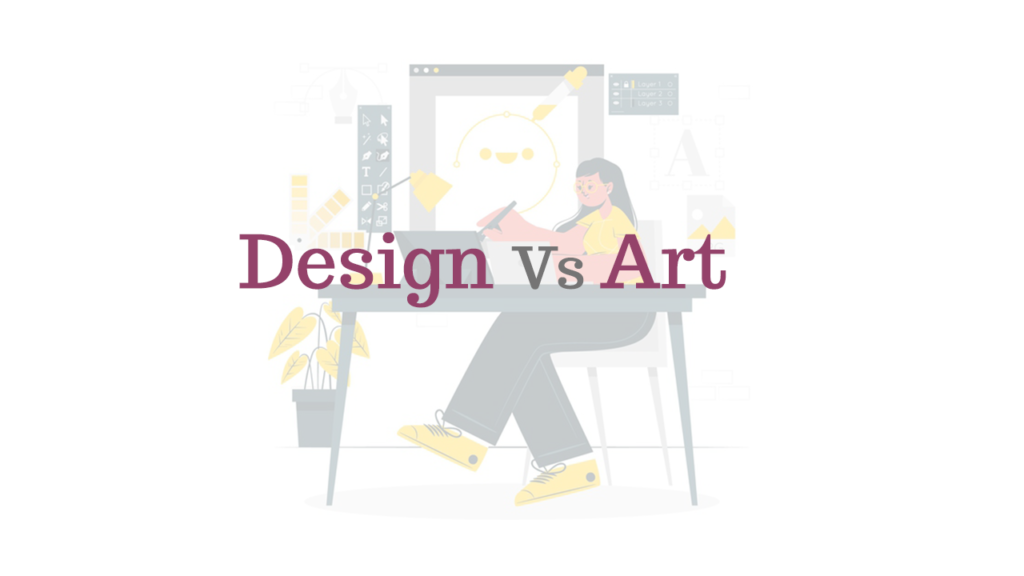A very misunderstood variation when it comes to classifying the distinction between art and design is the way in which it is interpreted. It is argued by many of the profound designers that equating art with a design is a sure-fire way to open a can of worms and hear bold statements like: “Design is not art. A design has to function.” Or “Art is meant to provoke thought and emotions, but it doesn’t solve problems.” & the most infamous dialogue that “Artists primarily work off instinct, whereas designers employ a methodical, data-driven process.”
Unfortunately, even after ages have passed with artists and designers attending to this uncalled battle it seems almost impossible to get a narrow escape for either party. The discussion often turns ugly and deteriorates into ranting and raving. Lines are drawn, battle flags are raised, and productive dialogue becomes impossible. The debate is never-ending as both design and art come in a very flexible gamut. People trying to figure out the answers to this search have found this discourse to be quite monotonous and tedious, maybe cause design and art both go hand in hand.
Let us first understand the basic difference between both of them-
General Definition
To break it down in the simplest manner, design happens when there is a need for solving a target-based problem. Art is never a social need rather it is a form of personal expression which arises with no demand or pressure from society.
End Result
Art is never rigid, even an incomplete art would still be considered as an exceptional piece of beauty, it has no demands. Meanwhile, the design is made according to the needs and expectation by a certain social group or a person. Calling design rigid would be wrong but it is not too flexible either
Connection to the Audience
Art is always open to interpretation, to different people it may have a different meaning, it is also possible that one person might connect differently every time they look at it. But design is mostly made in a way by the designer that it conveys a single message or meaning for everyone.
Conception
Art holds a different meaning and different ideology for everyone. When art emerges out of an individual it is not something that can be learned but can be perfected over time whereas designing is a skill but it also demands a certain level of creativity.
Since art being a border concept, it is often exclusive of subjectiveness. But one thing over the year I’ve come to understand is that art is always unique even the most minute details scream distinction. Whereas design often has to be made with a process it may or may not turn out to be unique. “Clients are the difference between design and art.” Rightly said by Michael Bierut. Too much art can ruin your design and vice versa.
Why is it important for us as an individual to understand the distinction between them?
The answer can range from being the simplest to the toughest. Just implying that they’re not the same can be very confusing for some of us. When we understand the difference, we experience and merit them differently. Art is never about attracting an audience; it is more of solace or an escape for an artist. Meanwhile, design needs its audience, it has little or no value whatsoever without someone to access it.
It has been proved time and again that art helps an individual to grow and find peace from the problems that we deal with on a regular basis. Creating, recognizing, or even looking at art helps us to deal with our fundamental problems, it aims at bringing peace or giving a message to the society at large.
Design on the other hand is valued on how it serves the community, on a complex process that has been simplified or has made developments. “There are artists who design and designers who create art.” Both are different, but both are important. There is clear reliability of both on each other.
The endnote is that we don’t confuse them, but value their worth. Clients should not treat their designers as if they were artists, nor should artists be required to adhere to follow a single-handed process.
Summary
Often laymen live in their own misconceptions and have different expectations from their creator. What you as a designer or a creator can do is first understand the difference, recognize the stereotype patterns involved, and then making people aware of what should be expected out of them in the first place. Like already mentioned above both design and art go hand in hand but each has its own complexities and subtleness which when understood by an individual helps them to dive deeper and clarify the unnatural tag and labels involved.

